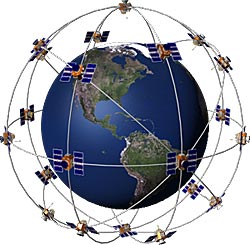Project:
GROUP PART
A. Explain to me, using a picture, how GPS works. Upload this picture to your Google Drive.
B. Use Google Maps/Google Earth and find the exact location of five landmarks to tell a story. This could be anything from famous Iowans to places where Laura Ingalls Wilder slept---use your imagination.
INDIVIDUAL PART
Create a series of vector representations that tell me how far each landmark is from the bell of the school. List the starting GPS coordinate to the nearest minute, the final GPS coordinate to the nearest minute, the path length/degrees, and the two legs. Show work.
GROUP PART
Use your understanding of GPS and/or Vectors to explain how one of the topics below work, it's advantages, disadvantages, and if your group would recommend it.
Include a sample physics problem associated with this topic, concrete examples and graphics as appropriate, along with a Resource sheet.
You may choose something else, but here are topics to consider:
- How 4Square and Facebook check-in work. Advantages and disadvantages. (I'd suggest checking in at least 10 places in the Mantown area if you do this. Use Google Earth to find the exact latitude and longitude)
- Developing a Geocaching Hunt (Brrr...if you do this, it will be cold. Make a hunt, but then explain exactly HOW you did it. If you have an app to do that, explain it.)
- Precision Agriculture (check out many of the online farm journals, or agleader.com, or other sites. Why do they have to sample the fields to use this technology? How accurate is it? Do you want to have tractors with auto-steering? Is this the future of farming?)
- Military Drone Targeting (Type in a location, and a remote control bomb can drop on a location half-way across the world. Human rights activists suggest that this technology is not as accurate as it should be, and many civilans have been harmed.)
- Discoveries using Google Earth (military secrets, shipwrecks and hidden treasure, and perhaps undiscovered archeological finds....all from your armchair. Where have these things been found? What is the GPS location of some of these secrets?)
- Using Vector-scaled technology in Powerpoint and Adobe Illustrator
- Problems and Foibles with your Automatic Navigator (at what point should you stop listening to the voice and use your common sense? What about the Apple Maps fiasco? Where do the maps used in these applications come from, anyway?)
- A GPS can be installed on cars to track a fleet, a rental car, or to check the habits of drivers in your family. Is this the future of insurance? Is it a benefit or an intrusion? How do these things work?)
- Navigation in Flight (What does it take to to be a aeroflight navigator, and how is it different than the Google Tours we just put together? How has GPS replaced sin, cos, and tan and the Pythagorean theorem needed by navigators of the mid-century last year?
- 3d printing is an application of vectors that can be used for a variety of purposes: DIY hands,
Grading:
Presentation (this can be a flipped video to show to the class or you can present)--15
Digitized artifacts (upload everything to a Google Drive folder, and then share with me)--15
Demonstrated Understandings in Physics related to vectors and/or GPS--15
Quality/Resources--15


